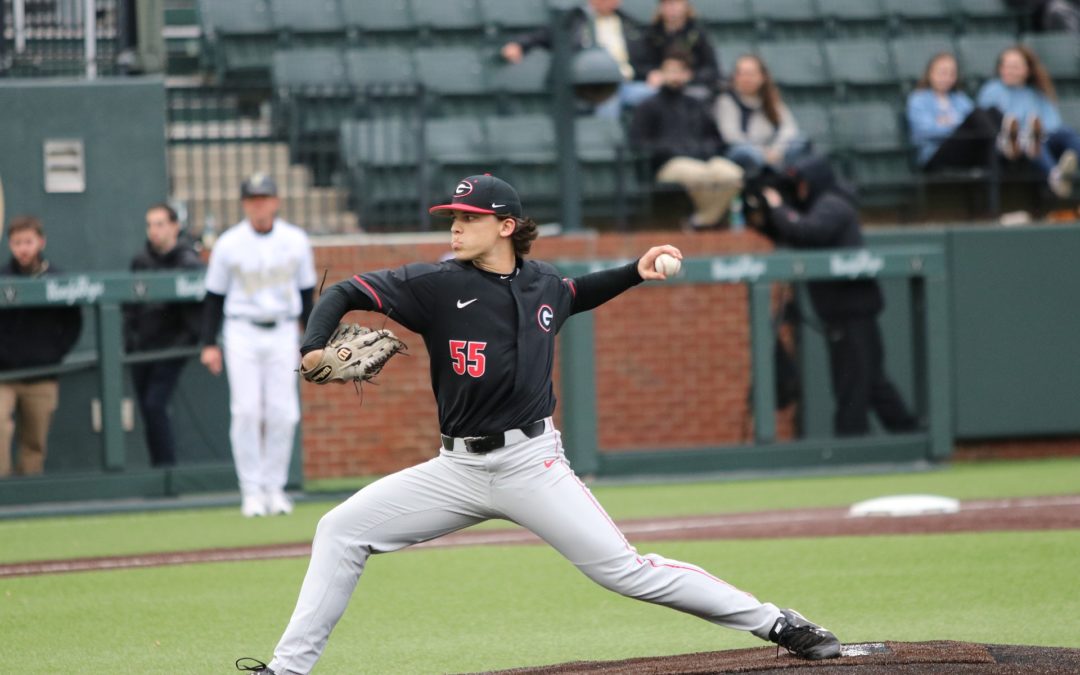Due to the role hip/shoulder separation plays in throwing velocity, it is one of the most talked about components of pitching mechanics.
Movement Sequencing and Throwing Velocity
Throwing velocity is created through a series of precisely sequenced movements that allow high amounts of force to be applied to the baseball in a relatively short amount of time. If these movements happen in the correct order and at the correct times, high velocity is likely to be achieved. The timing of the movements is important as energy is transferred from the feet, through the body, and into the ball. Each body segment is accelerated after the previous segment reaches its peak velocity and is rapidly decelerated, with the energy building up as it is transferred.
However, if multiple segments are accelerated at the same time or too closely together (in terms of timing), energy is transferred less efficiently and velocity will likely be lower. This is why hip/shoulder separation is seen as an important piece to throwing velocity.
What is Hip/Shoulder Separation?
Hip/shoulder separation is the difference in time between the hips reaching their peak rotational velocity and the upper torso reaching its peak rotational velocity. Every athlete is different in terms of optimal time difference between the two. This has to do with optimal length-tension relationships, which is beyond the scope of this article, but it’s important to note that no two athletes will have the exact same timing of hip and shoulder rotation.
The delay between hip rotation and upper torso rotation allows the upper body to store elastic energy as a stretch is imposed on the muscles, tendons, and fascia. Think about how much higher you can jump if you rapidly descend prior to jumping, rather than starting in the bottom position of a squat. Hip/shoulder separation is basically the same concept.
What Limits Hip/Shoulder Separation?
Limitations in mobility, strength, or patterning deficiencies can all lead to poor hip/shoulder separation.
Mobility
Limited hip internal rotation and thoracic spine rotation to the arm side can play a role in poor hip/shoulder separation. As your hips turn to face home plate, your front hip externally rotates and your back hip internally rotates. If there is not sufficient hip internal rotation range of motion (ROM), the back hip and upper body will not be able to dissociate, and the upper body will be forced to rotate with the lower body.
Similarly, if the thoracic spine is missing rotation ROM to the arm side, the counter rotation that helps put a stretch on the upper body will not take place, and the two segments will rotate together.
How Do You Know If You Have Adequate Mobility?
I use the prone hip internal rotation test with my athletes, and we’re looking for about 35-45 degrees of ROM.
I use the lumbar locked rotation test with my athletes to test thoracic spine rotation ROM.
Self-myofascial release and manual therapy can be helpful if tissue quality is poor in either of these areas. But, in conjunction with soft tissue work, mobility work is needed to “lock in” these new ROMs.
Strength
Strength is an underrated component to hip/shoulder separation and may be overlooked by some athletes and coaches. This is where rotary stability or strength through resisting rotation comes into play. In order to keep the upper torso from rotating with the hips, the external oblique, on the non-throwing side, must be strong enough to resist rotation when the pelvis begins to rotate. Fleisig et al., found that during the stride phase (peak leg lift until foot strike), the non-throwing side external oblique is activated, and its main function during that period is to help resist rotation (Fliesig et al., 1996).
If strength is inadequate, rotary stability movements such as side planks, pallof presses, or anti-rotational chops may be prescribed.
Patterning
If mobility and strength are both adequate, then patterning is likely the problem. Pitchers fall into suboptimal habits for a variety of reasons, but after performing a huge number of repetitions using that pattern, it becomes more difficult to break. Bad habits never really go away, new ones just become more powerful. But, in order to create a new habit or pattern, a lot of focused, intentional reps must be performed. This is where constraint drills come in to play. Telling an athlete what to change is rarely as helpful as putting them in a position to feel that change.
Here’s one example of a constraint drill often used to improve hip/shoulder separation; the roll-in:
Conclusion
No two pitchers will have the same mechanics and increasing hip/shoulder separation may not work for some athletes depending on their anatomy. But, if it’s a limiting factor for you, attacking mobility, strength, and/or patterning deficiencies should help get you on the right track.
Interested in training with us in-person or remotely? Contact us and let’s set up a time to discuss your needs.
References
Fleisig, G.S., Barrentine, S.W., Escamilla, R.F. and Andrews, J.R. (1996). Biomechanics of overhand throwing with implications for injuries. Sports Medicine, 21, 421±437.

